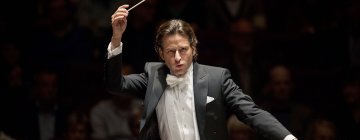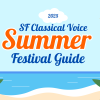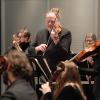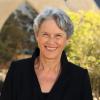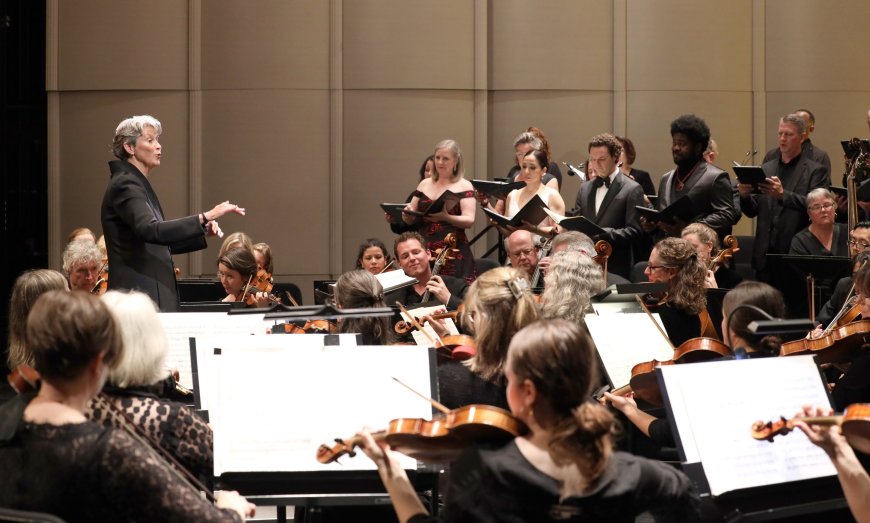
Every Carmel Bach Festival (CBF) that Artistic Director Grete Pedersen has overseen has had an overriding theme. This year’s iteration, her third — running July 12–26 — is titled “Dialogues,” meaning the connections between composers and their influence on one another. A secondary theme is J.S. Bach's The Art of Fugue, a thread between many of the concerts.
The Bach thread showed up even before the opening concert, in the Sunset Center Theater on Saturday, July 12 when a brass quintet struck up Contrapunctus I at the traditional free Tower Brass preconcert prelude on the venue’s terrace. Pedersen seems determined to keep Johann Sebastian in her sites even as she continues to freshen the repertoire of the festival as a whole.
As an entry into the festival, Pedersen chose one of those miracles of Felix Mendelssohn’s teen years, the Overture to A Midsummer Night’s Dream. The dialogue here was not so obvious, but Mendelssohn’s father Abraham bought a large collection of Bach manuscripts that figured heavily in his son’s education. Bach’s music spoke so powerfully to Mendelssohn that he was primarily responsible for reviving Bach at a time when his music had long since fallen out of fashion. While the violinists of the Festival Orchestra were adept at handling the fizzing passages evoking the Shakespearean fairyland, the two horns and timpani tended to blot out everything else in the more thickly scored sections. In general, the performance sounded best when the textures were less brass-heavy and quieter.
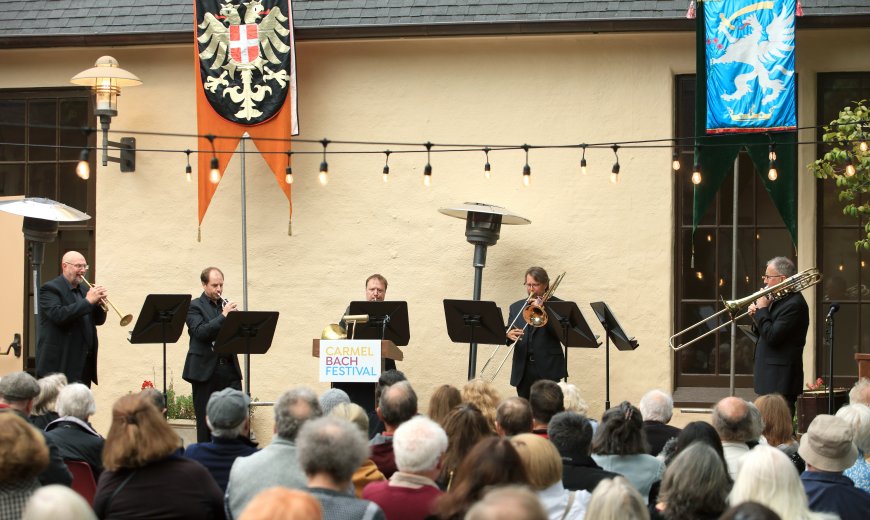
While the violinists of the Festival Orchestra were adept at handling the fizzing passages evoking Shakespeare’s fairyland, the two horns and timpani tended to blot out everything else in the more thickly scored sections. In general, the performance sounded best when the textures were less brass-heavy and quieter.
Igor Stravinsky may seem like an outlier at a Bach festival, but Saturday’s program essay pointed out that in 1935, the year CBF was inaugurated, the composer himself appeared in Carmel with violinist Samuel Dushkin. Together, they played a recital that included a distillation for piano and violin of Stravinsky’s wonderful ballet score Pulcinella. This music is, in essence, a dialogue between the modernist composer and a host of Baroque luminaries (although at the time he wrote it, Stravinsky thought he was communing only with Giovanni Pergolesi).
Igor Stravinsky’s suite from his wonderful Pulcinella ballet may seem like an outlier at a Bach festival, but the program essay pointed out that in 1935, the year the festival was inaugurated, Samuel Dushkin and Stravinsky himself performed Suite Italienne, the composer’s distillation of Pulcinella for violin and piano. The music is, in essence, a dialogue between Stravinsky and a host of Baroque composers (although at the time he wrote it, Stravinsky thought he was communing only with Giovanni Pergolesi).

Pedersen also launched another dialogue by thoughtfully having Pablo Picasso’s crude-looking sketches for Sergei Diaghilev’s original 1920 production of the ballet projected behind the orchestra. With the two double basses placed on opposite sides of the stage to emphasize yet another dialogue, the playing was spirited and zesty, overcoming a few rocky passages.
The big work of the evening was something of a rare bird, Haydn’s Harmoniemesse, the composer’s 14th and final Mass and his last major work of any kind. Pedersen and the orchestra were on home ground with this grandly joyous choral piece, playing with greater security. The Festival Chorale made a bigger sound than its chamber-sized numbers would indicate. The Gloria and Agnus Dei sections came to particularly exultant closing stretches, and the rhythm of the triple-meter section of the Credo had a nice swing to it.
Soprano Clara Rottsolk, a regular soloist here over the past three years, displayed a beaming timbre, contrasting with mezzo-soprano Guadalupe Paz’s creamy sound. Tenor Brian Giebler was in sturdy form, and the booming bass-baritone of Dashon Burton anchored the vocal quartet. The same soloists will take part in all three Masses presented this season, a continuing dialogue in itself.
